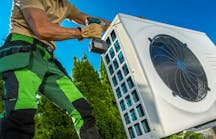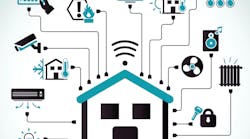The market for smart home technology that was about $24 billion in 2016 is anticipated to reach $53 billion by 2022. Smart homes are moving past the early-adopter stage and through the acceptance and demand stages quickly. With this in mind, forward-thinking builders and contractors might consider offering a wide-range of these features in new residential construction projects.
So, what exactly is creating the demand for smart home technology?
Acceptance of the Technology
Initially, there may have been some reluctance to accept smart technology in homes. This reluctance may have been rooted in concerns about reliability, perceived need, security, and ease of use. In a few short years, however, most of these issues have been addressed and more benefits to the technology have been realized. Artificial Intelligence (AI) assistants like Siri and Alexa have exploded in popularity and have been accepted into millions of homes. Many consumers have come to not only accept the help of these devices but have come to rely upon them.
Millennials Entering Housing Market
Slow to embrace homeownership, mainly due to a challenging economy and other unique circumstances, the largest segment of the population on the planet is moving into real estate in increasing numbers. While U.S. Census Bureau statistics show that home ownership by Millennials is still relatively small at 36%, according to Bloomberg, its growth from 34.7% a year earlier was higher than any other age group between 2016-2017. This is a generation who grew up with technology and the convenience and connectivity it provides. While their predecessors may have sought out open floor plans, garden tubs, and granite countertops, smart technology is potentially more important to this younger generation of home buyers.
Demand for "Green" Features
Because smart technology can save energy on heating, cooling and lighting and can even save water through smart irrigation, it is viewed as a valuable environmentally-friendly feature of a home. Millennials aren’t the only generation that values green brands and products, but their increasing involvement in real estate is certainly having an impact in this regard.
Adding Value to Homes
Like other features that create value in a home, smart technology can increase interest and demand for a property, and when properly designed and installed, can add real value. This is particularly true when local buyers are familiar with the technology and understand its convenience and capabilities.
Security
According to an article in Reuters, the globally connected home security system market is expected to grow by over 27% in the period from 2017-2021. Security is an integral part of smart home features, including the ability to lock and unlock doors remotely, detect motion, check into a home via live video and more. This expected demand coincides with the anticipated growth in smart technology.
Convenience
Consumers have come to rely on smartphones to provide directions, information about where to eat, and to stay connected with family and friends. Many count on smart technology for references and referrals, to make purchases and to share rides. It has become very much an “on-demand” society and it is no surprise many would want these conveniences woven into their homes at some point.
Popular Smart Home Features
It is easy to understand the value and convenience in having the most popular smart home features installed in a home. These include:
• Lighting
• Heating and Cooling
• Appliances
• Entertainment
• Locks and Security
• Sensors and Detectors
• Window Blinds
• Home Healthcare
• Irrigation
Since much of this technology can be more expensive to install as aftermarket features, more contractors are realizing the value of including them in new home construction. This often provides for an economy of scale in costs, while offering home buyers an all-in-one, seamless, smart home network solution. A home with professionally installed, complete smart home features will likely have a higher perceived value than one with a series of DIY installed, individual features.
The Difference Between "Automation" and Smart Features
There is a difference between features like automatically-timed thermostats and smart features in a home. Smart features are generally Wi-Fi connected devices that “learn” the habits of its owners. Automation in a home falls into the programmable device category.
Well planned smart features can work in concert with each other and be simply managed from a single device, most commonly a smartphone. Smart features have become increasingly secure and desired. For a home to be considered “smart”, it should generally have three or more smart features.
Smart Homes Here to Stay
It is difficult to imagine life today without social media, smartphones or GPS systems, and it will only become more difficult as time passes. It may not be long before many have these same expectations in their homes. Today, 43 percent of those who own smart homes are between the ages of 18 and 34. Builders and contractors who want to stay relevant in the coming years may want to prepare now to offer homes and devices that are better connected to their owners in the future.
What other construction feature increases convenience, adds value, improves safety and security, saves energy, and is “green”? What other home system appeals more to today’s home buyers? Smart technology in homes is neither fad nor limited to just Millennials. It appeals to all buyer segments and it is here to stay. The direction smart homes take from here is certainly up to debate, but it is hard to imagine things will stay as they are for long.
Ryan Tollefsen is the founder of the Unity Home Group.











